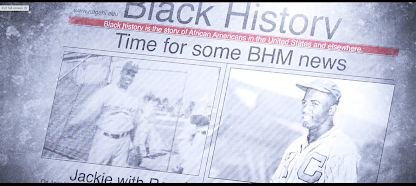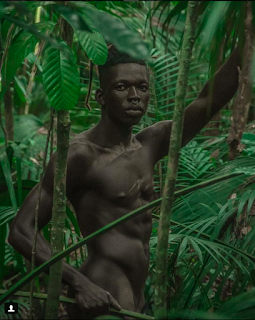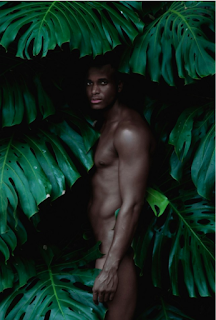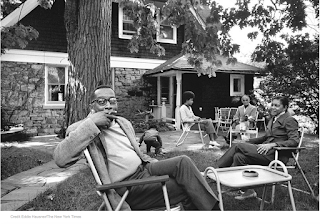Over the last year I've gone through alternating or oscillating waves of planning to end this blog and feeling energized enough to continue it. The paucity of responses, especially since 2007, has only exacerbated my sense that blogging may be a waste of time, though I do enjoy it, and yet, at the same time my "followers" have increased, so I guess things aren't as dismal as I sometimes think.
I know that the rise of other social media--
Facebook, where many longtime fellow blogging friends post anything and everything they find of interest;
Twitter, where I'm now fully chartered (with about 1,800 or so tweets);
YouTube; old standbies like
Yahoo!,
Hi5,
Myspace, and yes, that now hoary gathering space
Friendster; more specialized social media spaces; and parallels of these sites--have siphoned off interest from all but the most lively and focused blogs (like
Rod 2.0, who's as sharp and hot as a laser always). Also, I acknowledge that my own postings have shifted, from the early art and lit-focused eclecticism to politics, which I know turns (some) readers off, especially if you can get much of the same, often with more in-depth reportage or more interesting slants, elsewhere. Moreover, I'm quite aware, as my few readers also are, that the
Law of Diminishing Returns has taken hold here with each successive year (can that also be analogized to entropy?), with fewer posts ever year since 2005. So far in 2010 I've managed to make 22 out of January's 31 minimum daily posts, or achieve about a 70% posting ratio for the month, my highest January total since 2006, which I take as a positive sign, so I think I'll try to hang on for a little longer.
Posting is very difficult during the academic year; whereas I once had a bit of breathing room, things are less free these days, and I'm so often overloaded with classwork (I'll have 2.5 classes this quarter), and other work-related tasks, about which I cannot post at all for obvious reasons, but I do love blogging, so if you're willing to keep dropping in here, I really appreciate it.
===
Speaking of classes, I wanted to share a photo of today's blackboard from my English 392: "The Situation of Writing" class, which is required for all senior-year creative writing major. Today, we were concluding our discussion of the publishing section of the class (once labeled the "Doom & Gloom" unit, things have changed considerably since I began teaching this class), which included reading
Jason Epstein's The Book Business: Publishing: Past, Present and Future of Books (W.W. Norton & Co., 2001)* and I thought that as I've done in the past, I'd go over how you publish a book. I do use the computer in my classes (the students are Tweeting each week, and I post most class-related materials to Blackboard regularly), including this one, but I do love turning to the blackboard from time to time. And so it was with this rough flowchart. "A," at the far left, was our fictional writer of "mystery fiction," a genre one of the students suggested; the rest is, I think, self-evident if a bit illegible. If you are unclear about how books have tended to reach to readers, it's yours to review.

*Reggie H. suggested this book, which I hadn't read before considering it for this class; in the past I've tended to teach
André Schiffrin's The Business of Books: How the International Conglomerates Took Over Publishing and Changed the Way We Read (Verso, 2001), a polemic which turns on a narrative of steady decline, with a direr, more caustic tone, but I thought I'd try something new this year, and Epstein's volume is very informative and useful, even if it also at times is both disturbing (he worked for the CIA, he openly admits) and unguent in his unacknowledged privilege.
===

It's officially
Black History Month. I personally like to think of every month as Black or women's or Latino or queer or straight or Asian-American or working-class or immigrant or any possible identification history month, which is to say, all of these identifications should be in play always when we think about this society, its history, our collective and individual pasts, but given the realities in which we live, we still must take a lighthouse approach to guiding people along different paths other than the oblivion-laced mainstream one, which these identitarian-focused months provide. Certainly Black history--the Black history that is part of American history and the histories of the Americas-- remains a mystery to many (black and otherwise) as it always has, despite years of education. The discourse about Haiti's pre-earthquake political and social malaise, and the current lack of media discussion of the dangers of the US's presence there, show that only so much has seeped in over the years.

































